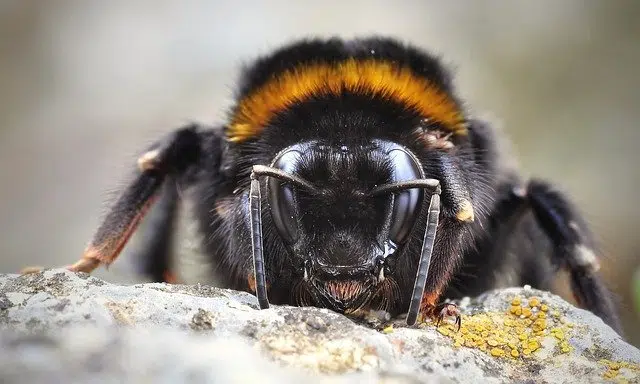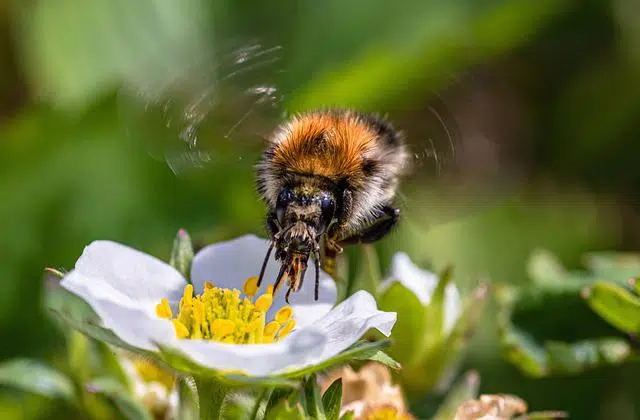
Bumblebees are hymenopteran insects that look like bees.
Bumblebee is a term that comes from bee . A bee, meanwhile, is a hymenoptera-type insect that is characterized by the production of honey and wax .
The bumblebee, in this framework, is an animal that is similar to the bee . It differs from this mainly because of its size, which is superior.
Characteristics of a bumblebee
Bumblebees belong to the genus Bombus . Although they are also usually called cigarrones , mangangas or botflies , the different names can refer to particular species, even from other groups.
In the specific case of bees, they are blackish hymenoptera that can display orange, white or yellowish stripes. They have silky hair that covers a large part of their body surface.
Being a hymenoptera, the bumblebee is simultaneously a licker and a chewer. Its mouth , thus, has a tongue and jaws . Bumblebees also have two pairs of membranous wings.
As for food, adult specimens ingest nectar , while they are in charge of collecting pollen for their offspring. It should be noted that females, on their hind legs, have an organ that allows them to store said pollen.

Pollination carried out by bumblebees is important for agriculture.
Differences between males and females
This pollen basket, known as the corbicula , is not the only difference recorded between male and female bumblebees. Females also have a stinger .
This stinger is an organ that is used to inject venom. Thus, it is constituted as a defensive mechanism that, in male bumblebees, is not present.
Bumblebee nests
Bumblebee colonies generally have about fifty workers. However, colonies of around twenty specimens and others with almost two thousand have been recorded.
Nests, smaller than those built by honey bees, can be made of straw and other plant substances, although bumblebees can also use rodent-made caves and other openings.
Sometimes, they resort to wax to air condition the nest and as a means of defense against possible predators. Inside the nests there are cells where the larvae and eggs are located and spaces that are used to store honey and pollen.
It is interesting to note that the cells do not have a hexagonal design, as they do in the structures of domestic bees. They are also not arranged in an organized manner.
Importance of its pollination
Bumblebees are recognized for their performance when it comes to pollination. In fact, they are used in agriculture thanks to this benefit.
By resisting low temperatures, bumblebees are able to pollinate in areas where bees are not present. Another advantage of these insects over similar species is that they begin pollination earlier, both in terms of time and season of the year.
In this way, in addition to pollinating wild plants, bumblebees pollinate crops . That is why there are farmers who use them in their fields. This is common among those who grow alfalfa and tomatoes , to mention two possibilities.
